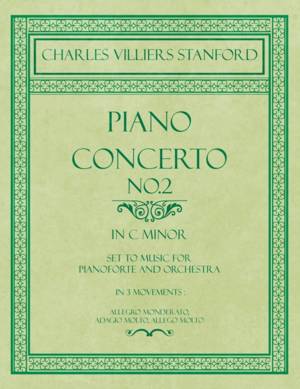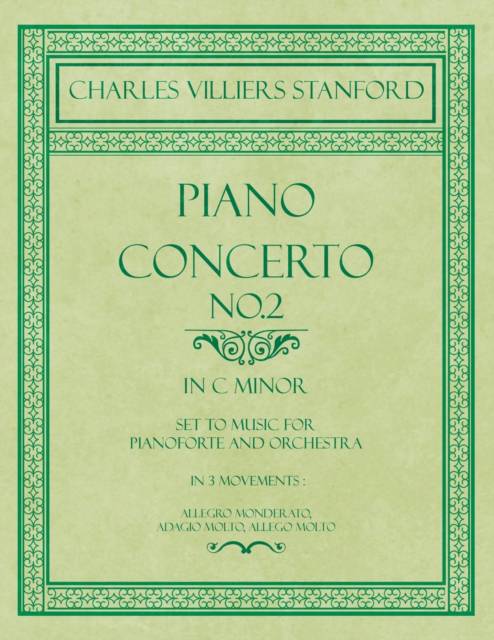
- Afhalen na 1 uur in een winkel met voorraad
- Gratis thuislevering in België vanaf € 30
- Ruim aanbod met 7 miljoen producten
- Afhalen na 1 uur in een winkel met voorraad
- Gratis thuislevering in België vanaf € 30
- Ruim aanbod met 7 miljoen producten
Zoeken
Piano Concerto No.2 - In the Key of C Minor - Set to Music for Pianoforte and Orchestra - In 3 Movements
Allegro Monderato, Adagio Molto, Allego Molto
Charles Villiers Stanford
Paperback | Engels
€ 29,95
+ 59 punten
Omschrijving
This volume contains the musical notation for Charles V. Stanford's "Piano Concerto, No.2", a classical music composition for piano and orchestra in three movements. Presented clearly with ample room for notes and annotations, this volume is ideal for students of music and those with an interest in learning and playing classical music. Sir Charles Villiers Stanford (1852 - 1924) was an Irish composer, conductor, and teacher of music. He was educated at the University of Cambridge and continued his studies in Berlin and Leipzig. He was a very influential composer, responsible for making Cambridge University Musical Society an internationally-acclaimed organisation. Stanford was also a profuse composer, producing a large corpus of work in many genres; however, he is perhaps best remembered for his Anglican choral works for church performance. His music eventually became overshadowed by that of Edward Elgar and a number of his former pupils in the in the 20th century. This composition would make for a fine addition to musical collections and is not to be missed by fans of Stanford's seminal work. Many vintage books such as this are becoming increasingly scarce and expensive. We are republishing this volume now in a modern, high-quality edition complete with a specially commissioned new introduction on the history of musical notation.
Specificaties
Betrokkenen
- Auteur(s):
- Uitgeverij:
Inhoud
- Aantal bladzijden:
- 168
- Taal:
- Engels
Eigenschappen
- Productcode (EAN):
- 9781528707237
- Verschijningsdatum:
- 14/12/2018
- Uitvoering:
- Paperback
- Formaat:
- Trade paperback (VS)
- Afmetingen:
- 216 mm x 279 mm
- Gewicht:
- 403 g

Alleen bij Standaard Boekhandel
+ 59 punten op je klantenkaart van Standaard Boekhandel
Beoordelingen
We publiceren alleen reviews die voldoen aan de voorwaarden voor reviews. Bekijk onze voorwaarden voor reviews.








